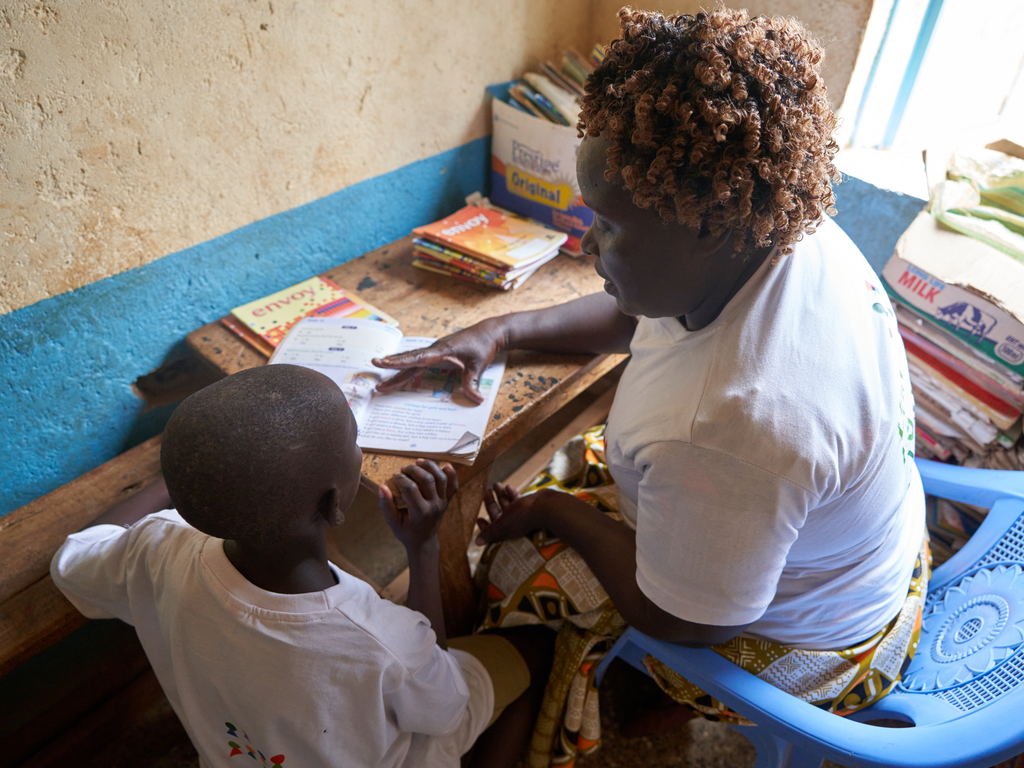
‘Education gave me strength’: Syrian refugee Muzoon’s message for children caught up in conflict
Barriers to education, Children in conflicts, Education in emergencies, Refugees and internally displaced people, Right to education, Safe schools, Teachers and learning
The teenager went to Chad to highlight the need for education during humanitarian emergencies - as new figures showed 25 million children are out of school because of conflicts in 22 countries.
Muzoon Almellehan knows what it feels like to be driven from your home by conflict. She also knows the value of education – especially when the rest of your life has been turned upside down.
Her family fled from Syria four years ago and her school books were the only belongings she took.
Muzoon spent nearly three years in neighbouring Jordan, including 18 months in Za’atari refugee camp. There she made it her mission to persuade parents to encourage girls into education.
Last year the 19-year-old addressed the Supporting Syria and the Region conference in London, when world leaders promised to get every Syrian refugee child into school in neighbouring countries.
A few days ago Muzoon travelled to Chad – where almost three times as many girls as boys of primary age in conflict areas are missing out on education.
They are among more than 25 million children between six and 15 – or 22% of children in that age group – who are missing out on school in conflict zones across 22 countries, according to statistics released today by UNICEF.
“Conflict can take away your friends, your family, your livelihood, your home,” said Muzoon, who now lives in the United Kingdom.
“It can try to strip you of your dignity, identity, pride and hope. But it can never take away your knowledge.”
The UNICEF figures show that at primary school level South Sudan has the highest rate of out-of-school children – close to 72%, followed by Chad (50%) and Afghanistan (46%).
Those three countries also have the highest rate of girls who are out of school – 76% for South Sudan, 55% for Afghanistan and 53% for Chad.
At the lower-secondary school level, the highest rates of out-of-school children are found in Niger (68%), South Sudan (60%) and the Central African Republic (55%).

Out-of-school rates for girls spike for this age group, with nearly three-quarters of girls in Niger and two in three in both Afghanistan and the Central African Republic not in school.
Muzoon went to Chad to highlight the need for education during humanitarian emergencies. There she met a 16-year-old girl who was abducted by Boko Haram outside her school in Nigeria at the age of 13 and was drugged, exploited and abused for three years before fleeing.
Muzoon also met children who are able to get an education for the first time and community members who are risking everything to get children into school.
“Meeting children in Chad who had fled Boko Haram reminded me of my own experiences in Syria,” she said. “Education gave me the strength to carry on. I wouldn’t be here without it.”
About 90% of children arriving in Chad from Nigeria have never been to school. In response to the education crisis there, UNICEF has so far this year provided school supplies to more than 58,000 students, distributed teaching materials to more than 760 teachers and built 151 classrooms and 101 temporary learning spaces.
“At no time is education more important than in times of war,” said UNICEF Chief of Education Josephine Bourne.
“Without education, how will children reach their full potential and contribute to the future and stability of their families, communities and economies?”
A $10 million allocation from the Education Cannot Wait fund will help to provide quality education for displaced children and those living in host communities in Chad.
The fund was launched last year to give vital education support to children caught up in emergencies such as wars or natural disasters.
More news

Take the test and discover how our Schools Hub helps students grasp the global education crisis
